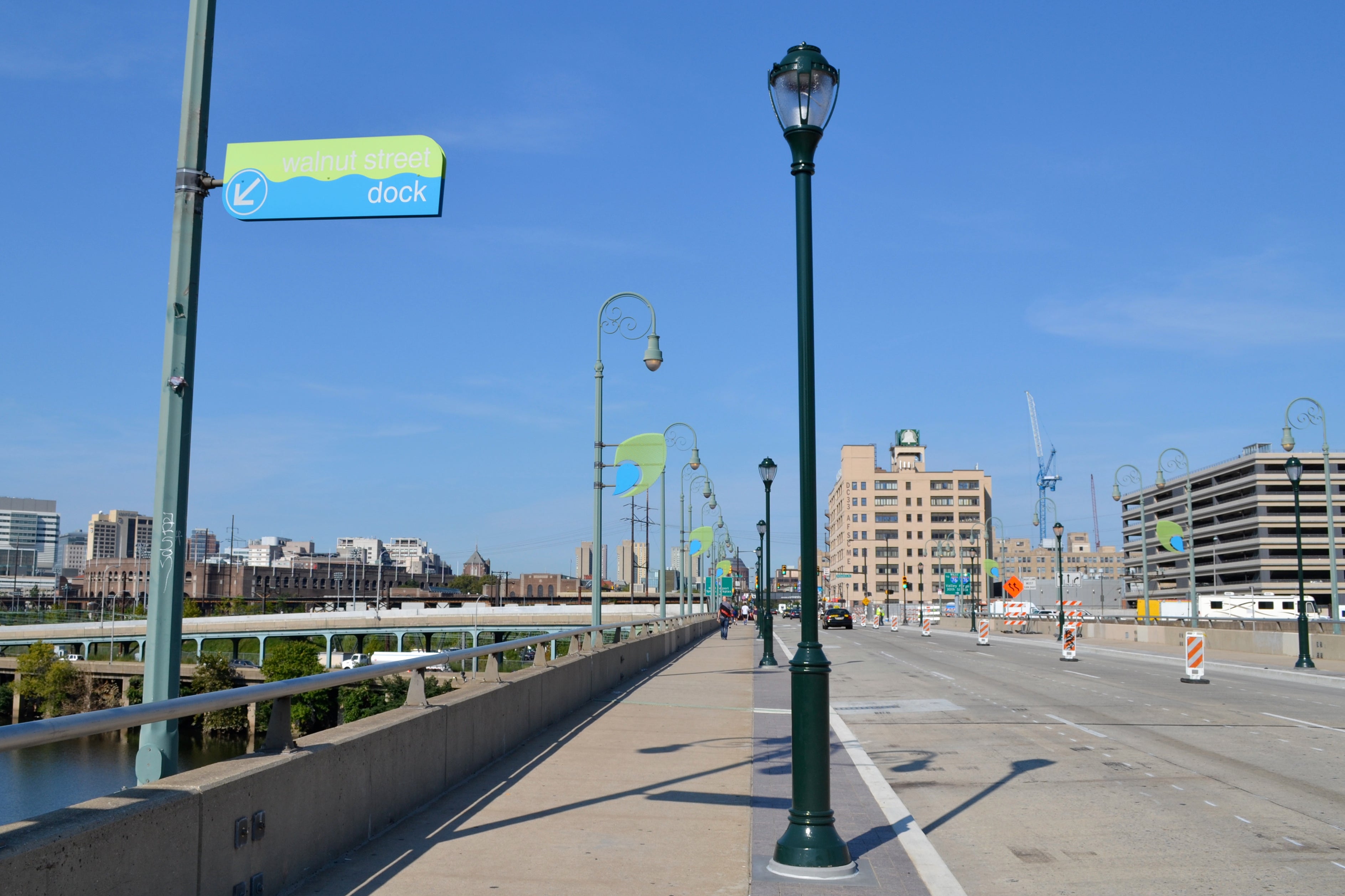Walnut Street Bridge work to be completed this week
Construction on the Walnut Street Bridge is set to wrap up this week as crews complete work on the north-side pedestrian right-of-way, remove overhead structures and restripe the vehicle and bicycle lanes.
Walnut Street from 23rd Street to 30th Street has been under construction since February when the city broke ground on the Walnut Street Bridge Gateway Project – an effort to slow traffic over the bridge and reduce the overall industrial, highway feel.
“The concern from people was that it was like an expressway,” said Lane Fike, director of capital programs at the Schuylkill River Development Corporation.
The completed construction project includes widened sidewalks, a buffered, left-hand bike lane, “pedestrian-scale” lighting, relocated signage and one less vehicle travel lane.
The previous highway-style signs and incline of the bridge just before the entrance to I-76 encouraged drivers to increase their speeds as if the bridge were a highway on-ramp, Sarah Clark Stuart, campaign director for the Bicycle Coalition of Greater Philadelphia, said.
“By making the bridge a little narrower [and lowering the signs], I think it’s going to help convey a message that this is still an urban street,” she said.
Since the bridge was built in 1990, “the 30th Street area has been through a complete transformation,” said Steve Buckley, director of planning and policy for the Mayor’s Office of Transportation and Utilities.
He described the Walnut Street bridge and 30th Street area in past decades as a “kind of no man’s land.”
“If you had been out before and remembered what it was like walking across, you had no separation between the six or seven foot curb and vehicles that were traveling between 40 and 50 miles an hour adjacent to the sidewalk,” Buckley said.
Since then, the bridge has seen a dramatic increase in pedestrian traffic.
Today, the Bicycle Coalition estimates as many as 241 bicycles per hour cross the bridge during peak commuter times.
A main feature of the Walnut Street Bridge Gateway Project is the left-hand bicycle lane and painted buffer, which the city hopes will reduce bus-bicycle conflict on the right-hand side of the road.
“It has historically been viewed as a constant point of safety concern from SEPTA and our traffic engineers concurred,” Buckley said.
Once the final bike lane striping is completed, the new left-hand bike lane and painted buffer will extend along Walnut Street from 23rd street to 63rd street.
After users cross the bridge, parking resumes at 30th Street. From 30th street to 63rd street, the final road layout from left to right or south to north will feature a sidewalk, lane of parked cars, bicycle lane, painted buffer, vehicle travel lanes, parking lane and another sidewalk.
Bob Burdalski, who works at Trophy Bikes just west of the bridge said he likes the painted buffers, which give cyclists more room to maneuver if a driver opens the door of a parked car.
“The bike lane as it [was] is kind of a death trap. People go 40 or 50 miles an hour over a [35] mile an hour bridge,” he said.
Though there were detour signs directing cyclists across the South Street Bridge during construction, the signs were not always heeded.
“It’s pretty well labeled,” Burdalski said. “I don’t think most people pay attention to it. I don’t pay attention to it because it’s a big inconvenience.”
Vanessa Vieira, who uses the bridge to commute to work at Sweat Fitness near the 23rd Street base of the bridge, said until the new bike lane is completed, she will ride her bike on the sidewalk.
While working at Sweat Fitness at its Walnut Street location, Vieira has seen first hand what the high speeds of vehicle traffic on the bridge can lead to.
“We’ve had four cabs over the course of our time here crash into our windows,” she said.
“The street needs a bike lane. It’s definitely not safe without one.”
The $2.23 million project was funded through a TIGER grant from the U.S. Department of Transportation and additional federal funding from the Federal Highway Administration.
Contact the reporter at christinefisher8@gmail.com
WHYY is your source for fact-based, in-depth journalism and information. As a nonprofit organization, we rely on financial support from readers like you. Please give today.






